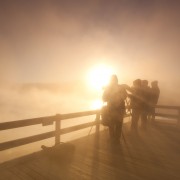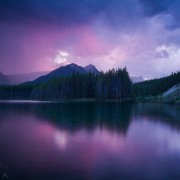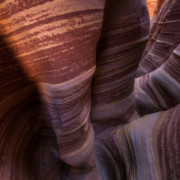Landscape Photography Tips for capturing & creating Mood
Moody images are currently very popular in landscape photography. There are also a cornerstone in my overall portfolio, although mood can come in different shapes, sizes, and colors. In this article, I talk about a few ways to play, approach, and capture mood in the field. I also provide a few tips on how to breathe some life into them during post-processing.
Capturing the Mood in Landscape Photography
Even though mood can be enhanced or even faked in post-processing, its a great idea to plan ahead and be in your desired location when the conditions arrive. You see, atmosphere or mood doesn’t always create itself. Without some sort of atmosphere, it’s really difficult to convey mood.
Location & Weather
One of the two main things I look while planning is a great location. This usually means something with big mountains, particularly on their windward side – the side that gets a bulk of the moisture from passing clouds pushed by the wind. In this place, there’s a high likelihood of some sort of atmosphere. But, even drier areas can experience atmosphere if you time it right. Like the Monsoon season of the Southwest, the spring rains in the deserts, plains, and valleys and the winter months almost everywhere can provide incredible and unique atmosphere and mood.
This brings me to my next objective… weather. It’s tricky to predict but it does have patterns. Paying attention to these patterns helps greatly in capturing landscape scenes with much more interest. Look for storms, clouds, steep drops or spikes in temperatures, and moisture (rain or snow). These elements always bring atmosphere with them and that’s how you capitalize on mood!
Here is an example of how location and weather can work together to create spectacular moody landscape photos.

Moody Landscape Photography captured at a great location with dramatic weather at Glacier National Park.
On this day, I was leading a group to one of my favorite locations in Glacier National Park in Montana. After weeks of little to no clouds at the right times of day, we found ourselves shocked into a cloud inversion. There was a very low chance that light would appear due to how thick the clouds were but you cannot capture what you are not there for. We rolled the dice and were rewarded handsomely.
Using weather applications such as Accu-Weather, Wunderground, or Clear Outside provides a great leg up on being in the right place at the right time. Although I do enjoy some spontaneity in my adventures these days – just taking what nature gives me – I do try to plan loosely around the weather.
Wind is also a major force in creating drama or mood. If you can be in a field of sand dunes during a windstorm you will witness mood like you’ve never witnessed before.
Sometimes atmosphere DOES create itself, like in this image above where the mist generated by the immense waterfall gives whimsy and separation to the scene. A great dark but soothing mood.
The Right Light
The second most important thing to me in capturing mood is waiting for the RIGHT light. Not all light is moody light and not all light is good or right; each scene requires its own unique type of light. In my opinion, moody light isn’t the most contrasty, bright, or colorful although there are times where it can be. Typically, moody light presents in the very early or very late hours of the day, during a clearing storm at sunrise or sunset, an opening in a thick cloud blanket, or even during a rain storm. It’s soft, pale, and directional.
Every once in a while, atmosphere is present at midday in what would normally be a very difficult type of light. Here are some examples: where the sun is blocked and slightly diffused but the light is overhead; when a rainstorm is passing by, creating light beams and highlighting parts of the landscape or dappling light on the scene. This doesn’t happen too often but when it does, it can be incredible. You might now be saying to yourself , “So, basically I need to live in the field?” Ha! Sure… if you can be in a place for just the right weather you increase your chances of capturing that one unique and amazing image.
In the above image, Mount Whitney Being bathed in sunrise light while a cloud inversion was clearing giving way to fresh snow on the Eastern Sierra range. I spent two days waiting for this one, fleeting moment. It was a big risk having only two days to spend there. Patience, planning, and luck helped me capture this unique and moody image of a very popular and well captured place.
Creating the Mood
Starting with a moody scene obviously makes it easier to end up with a moody image after post-processing. So, once you’ve gotten to your location, experienced amazing atmosphere, and captured it perfectly, what do you do?
Like I said eariler, moody light isn’t always the brightest or boldest. It’s a good idea to keep things dark but visible, detailed but not overly contrasty. To do this in post-processing, less is usually more.
This concept took me an exorbitant amount of time to figure out. I would take every raw file, no matter what the tones looked like, and drag the darks, shadows, and blacks all the way up. I would then level back out the exposure and set the whites, but with very little discretion for what the scene actually needed.
If you’ve properly exposed the image with regards to not clipping your shadows or highlights, you usually only need a little reduction in exposure and a slight lift in the darks and blacks; a gentle lift of contrast and clarity and you at least have a good base. The trick to a dark and moody scene is to have most of the scene in darkness but be able to revel in the details with clarity or view the image a particular way.
Viewing the image with a white background while processing can help you really push the image dark without losing detail. Also, the gamma, black point, and calibration of your monitor is of upmost importance when creating moody images.
Many times when I see a moody image fails a little at being moody, it’s because the image wasn’t balanced. In that, I mean the sky or some elements of the scene are too bright. When I approach my landscape scenes, moody or not, I tend to break then into parts, mentally and digitally. Usually the brights of a scene appear brighter to the camera than to our eyes. So, be careful when reducing the brights to a more realistic or slightly darker-than-real- life level. Usually a reduction in whites helps the light feel softer and creates a less dynamic scene, thus reducing contrast. As I mentioned earlier, moody scenes are typically less contrasty and dark.
Although this image was perfectly exposed, I chose to process the file once for the sky and once for landscape. This balanced the image and brought back the dark and moody feeling.
Once we set the mood for the image, we must bring back the detail, using some clarity and structure partly by way of tonal contrast to do so. I like to target mid-tones, where contrast and color live. When we apply contrast without changing the brights and the darks, we can enhance color AND textures without needing to add more saturation. Sometimes, to really refine the contrast, I like to use the middle input slider of levels adjustment filtered with a mid-tones luminosity mask. Also, plug-ins like DXO’s NIK collection has a tonal contrast filter that gives you great control in adding contrast via tones. Don’t forget… things that appear closest to us in an image should have a little more contrast, structure, and detail than objects that appear further away. Because of this, applying it selectively rather than globally is important.
I also like to set the global white balance a little cooler, then work the warmth back in via color dodging or double processing the same file once for warm highlights and once for cooler darks. I then blend the images back together with luminosity masks when the light makes sense to do so. This cool to warm transition helps enhance depth, which gives the eye something specific in the image to move towards. The following images are good example of this.
I hope these tips gave you something to think about on your quest to capture and create moody images! One thing is certain… nothing adds to a landscape image more than atmosphere and drama. Whenever you can capture the mood, you should! It’s a challenge, one that can end in great imagery! So, the next time you’re on a photo trip and the weather is bad, don’t give up!

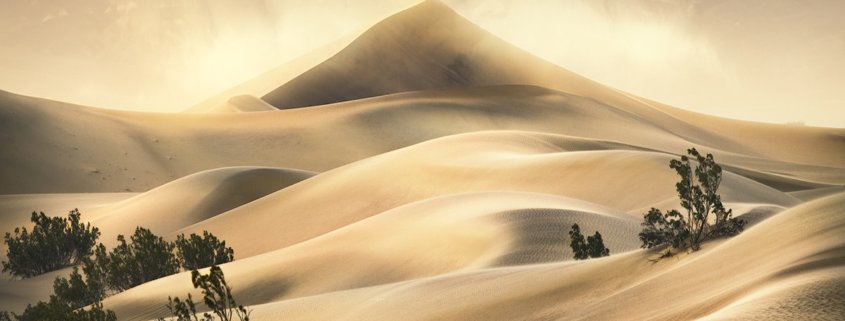
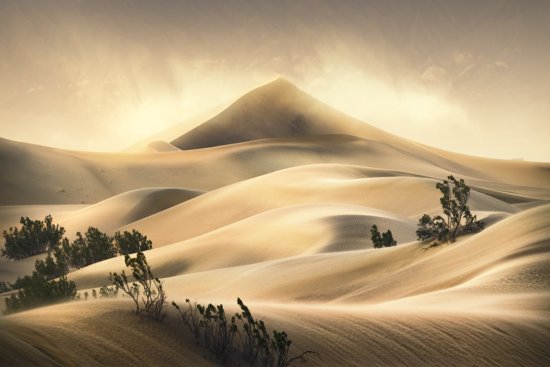







 Grant Collier
Grant Collier